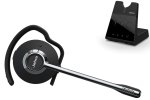Hello,
I have been testing Resound Nexia 5 and 7 with normal ex-earphones and M&RIE earphones for a few weeks. Since yesterday I have had the phenomenon for the second time that after wearing them for a while, sounds suddenly come in too high, are too loud, and are also noticeably blocked out on the left. These are familiar noises/sounds from my everyday life such as family voices, clinking dishes, etc. This was not the case immediately after the fitting by the acoustician.
In each case a different device and different earphones were affected. In each case the left side is affected.
At work I wear a Jabra Engage 65 Convertible on the left.
I have connected the devices to my Google Pixel 7a and use the latest app from the store.
It is the case that I would like to say that the sound output is definitely different. As if the configuration of the device is/is being changed. Does anyone know this? Has anyone had similar experiences? What could be the reason for this? Can the device be affected by external influences?
After this has happened for the second time and I finally placed my order with the audiologist a few days ago, it makes me really think and unsure whether it is the right purchase.
Thank you for your contributions.
I have been testing Resound Nexia 5 and 7 with normal ex-earphones and M&RIE earphones for a few weeks. Since yesterday I have had the phenomenon for the second time that after wearing them for a while, sounds suddenly come in too high, are too loud, and are also noticeably blocked out on the left. These are familiar noises/sounds from my everyday life such as family voices, clinking dishes, etc. This was not the case immediately after the fitting by the acoustician.
In each case a different device and different earphones were affected. In each case the left side is affected.
At work I wear a Jabra Engage 65 Convertible on the left.
I have connected the devices to my Google Pixel 7a and use the latest app from the store.
It is the case that I would like to say that the sound output is definitely different. As if the configuration of the device is/is being changed. Does anyone know this? Has anyone had similar experiences? What could be the reason for this? Can the device be affected by external influences?
After this has happened for the second time and I finally placed my order with the audiologist a few days ago, it makes me really think and unsure whether it is the right purchase.
Thank you for your contributions.



